Supermicro X12STN-E Performance
Instead of going through the entire Linux-Bench test suite, we are going to show a few performance and power numbers here to give a general sense of performance that is in line with our TinyMiniMicro series.
Python Linux 4.4.2 Kernel Compile Benchmark
This is one of the most requested benchmarks for STH over the past few years. The task was simple, we have a standard configuration file, the Linux 4.4.2 kernel from kernel.org, and make the standard auto-generated configuration utilizing every thread in the system. We are expressing results in terms of compiles per hour to make the results easier to read:
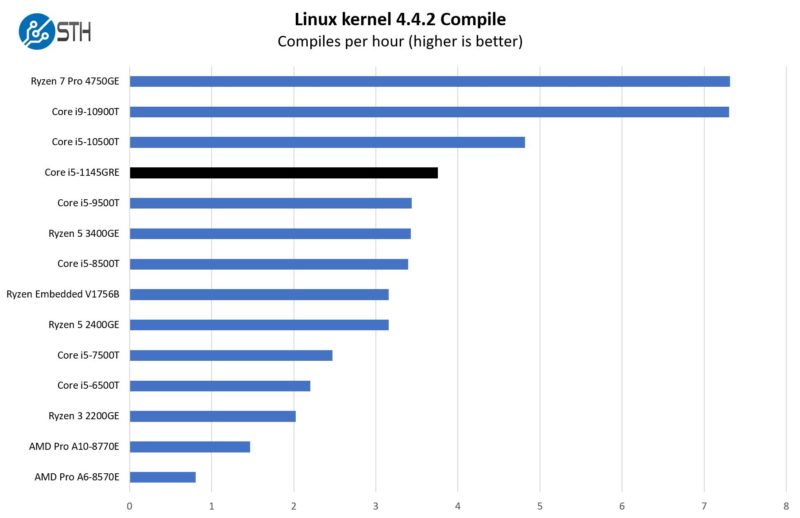
Here the performance of the 4 core/ 8 thread solution is very good, and overall this chip is going to perform well in our testing.
7-zip Compression Performance
7-zip is a widely used compression/ decompression program that works cross-platform. We started using the program during our early days with Windows testing. It is now part of Linux-Bench.
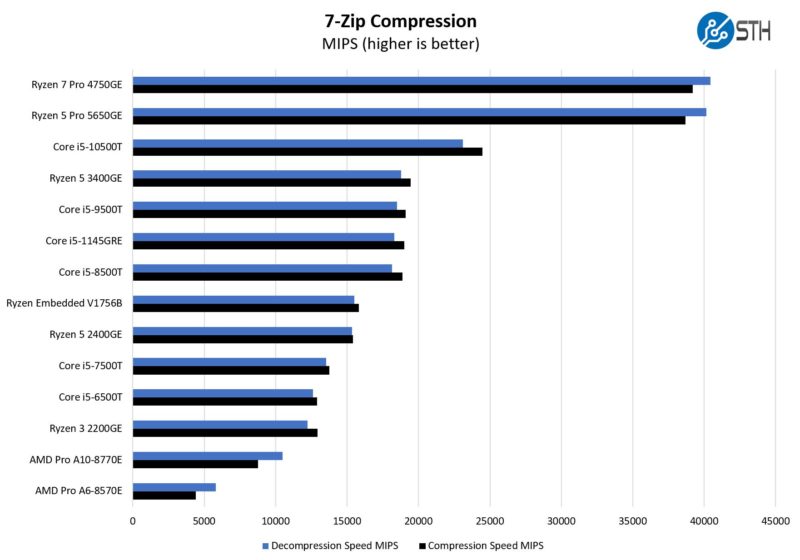
This is a newer chip than the AMD Ryzen Embedded V1756B, and it shows here in terms of performance. AMD generally performs well on this test overall, so this is a very good result for the 11th generation Intel Core embedded CPU.
OpenSSL Performance
OpenSSL is widely used to secure communications between servers. This is an important protocol in many server stacks. We first look at our sign tests:
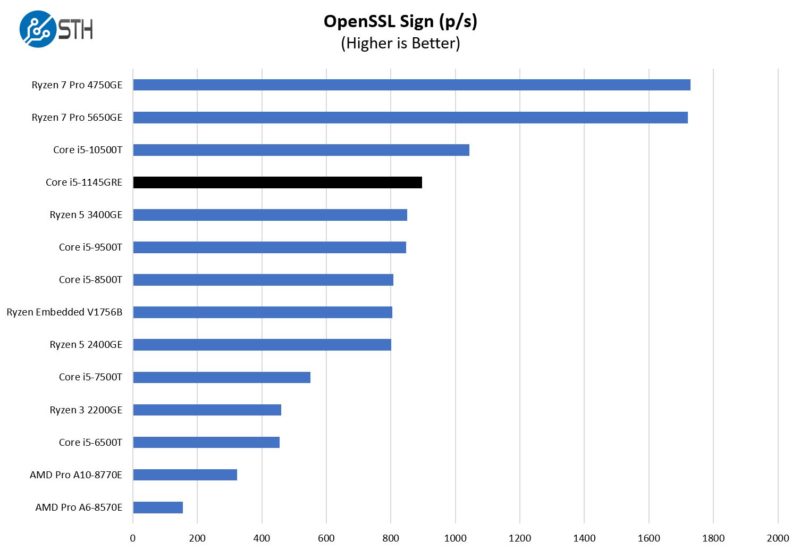
Here are the verify results:
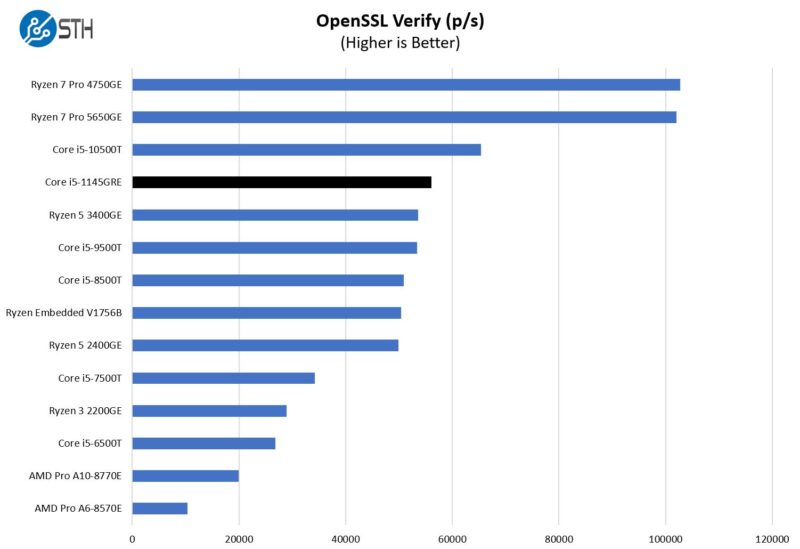
Again, we see solid results here putting it roughly between the Core i5-10500T and Core i5-8500T in terms of performance.
A Quick Bit of Context
The same concepts that we looked at in our recent Stop Leaving Performance on the Table with AWS EC2 M6i Instances piece where we looked at onboard acceleration and its impact on performance applies here. A big part of the offering is utilizing the onboard accelerators for AI inference as well as for video to offload tasks to dedicated parts of the chip.
Of course, one has to use accelerators, but as they find their way into platforms like this, utilizing accelerators will become a bigger part of the puzzle.
Supermicro X12STN-E Power Consumption
In terms of power consumption, this is a very low wattage platform. That also means that the configurations will impact the power consumption figures significantly. Without the BMC however, we were able to achieve power of only 4-6W at idle. On many server platforms that floor is more like 10W due to the BMC. Even the 1L corporate desktop PCs are 9-14W due to the fans they have running and higher base clocks. At the top end, we did not crest 35W but there was still more that could be added such as higher-power PCIe Gen4 SSDs, radios, and USB devices. Going too high and one would have to start thinking about the passive cooling capacity of the enclosure.
Final Words
This is a really interesting platform. The fact that it has 2.5GbE means that this is a generational upgrade over older platforms. One also gets features like the Intel Xe graphics and new 10nm Tiger Lake accelerators onboard. While many of our readers are going to be interested in the Celeron-based X12STN-C model for something like firewalls, this X12STN-E is designed more for video processing.
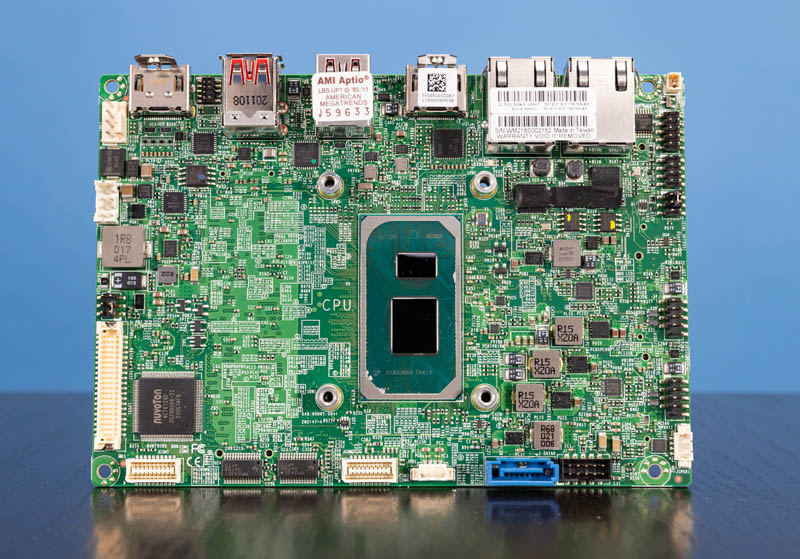
Part of Intel’s strategy is to get good enough AI inference performance and video encoding in the x86 chip itself so one does not need to add a PCIe GPU. This reduces power and footprint.
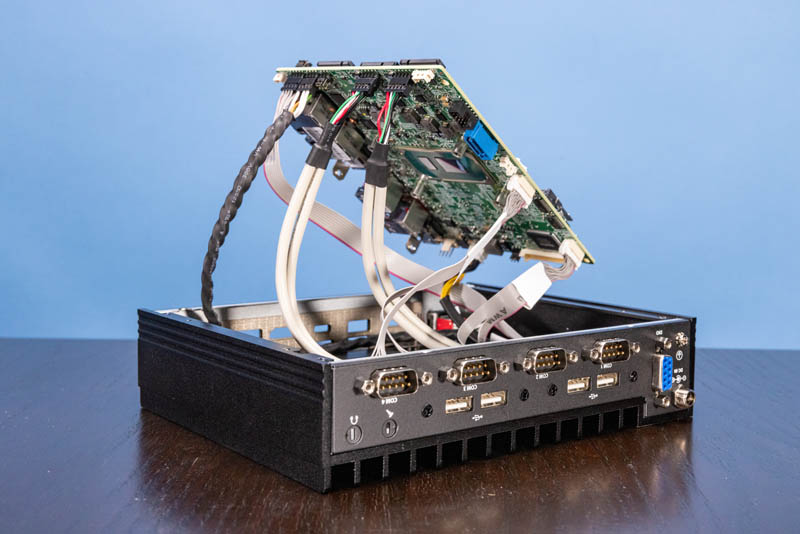
Overall though, when we first heard about this platform a few months ago, we knew we had to do it. We wish that the power cable situation and supply improve, but they should once this platform is officially released in the near future.



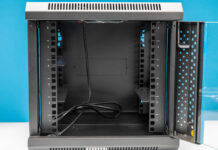
When you get these types of more interesting devices, how do you buy them? Are they vendor-lended, are you going on the market?
This looks really interesting, but for a lot of us who don’t have corporation-sized purchasing power, it always comes down to “value.”
The bayonet DC connector is an excellent idea I wish more PC makers adopted.
@Tozmo, It’s ~U$750+.
Not everyone has the magical connections that you have in the IT world needed to get the latest and greatest. Those of us just starting out are very interested in these devices but we would like to buy them too. Information about where they can be acquired and how much they cost is information I would like to see in future articles.
Oh for a SKU with POE & IPMI ;-)
Sadly with enclosure this looks to be the same price as the OPNsense 840, which gives you 2x10G + 4x 1G, a 4 core Epyc, 2 x NVMe, but no video. I’d be curious how they compare in performance.
Here is the link for this product.
https://www.supermicro.com/en/products/motherboard/X12STN-E
@YOs
I can improve on your snark by saying:
– Not enough SATA ports (or SATA ports are so yesterday, why bother)
– Who still uses DB-9 connectors and RS-232?
– No PCIe 3 or 4 slots? Not gonna buy it for that reason.
– WTF! No i7 or i9 option!! How lame!!
And finally:
– Nice, but I’ll wait for “product Z” to come out. Intel says it will be released in XXXX after they build that ?nm FAB that they have been promising.
Great idea having the power so it can’t be accidentaly removed but then they just use a switch on the front with no sheilding!
I found another Easter Egg! On the second page above the last image it says “inadvertantly” instead of “inadvertently”.
@Sleepy;
There are still a large number of industrial devices that use serial interfaces for control purposes on the factory floor. I wish you nothing but the best as you await that Intel product, code named: Purple Squirrel, that will meet your kitchen sink of requirements at a Pi price needs.
@Patrick: At least the BIOS sticker spelled “AMERICAN MEGATRENDS” correctly this time.
Fazal Majid February 16, 2022 At 8:11 am
The bayonet DC connector is an excellent idea I wish more PC makers adopted.
—–
to: Fazal Majid
It does not look like a bayonent style e.g. BNC, receptical, but rather a typical, threaded 5.5 x 2.1mm adapter. A sort of poor-man AMP connector minus being slot keyed, that started to come out in mass from the 1970’s with desktop calculators… and like devices that used wall transformers. The connector is used in the cinema industry such as small monitors, Ninja V.
The “point” of SBCs, as claimed by Puget and various other companies, is that their tightly integrated and optimized hardware configurations, made possible by locked-in CPU/GPU/SoC configuration compared to conventional commercial ITX and other modular standards, provide efficiency, reliability, and/or performance benefits compared with their modular equivalents.
I say prove it. In a real way. A real test that compares a modest range of SBC hardware running low power and high power systems, that you might find in low-access infrastructure vs signal processing or radar.
Prove it over a test sample that provides data that is reliable enough to definitively settle this for an entire industry.